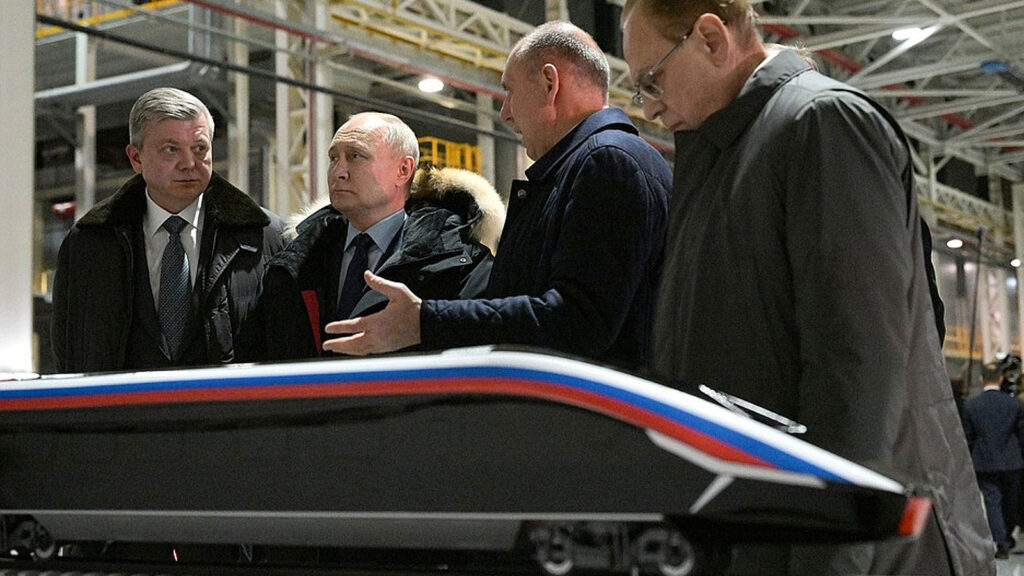In an unprecedented development aimed at transforming the transportation landscape in Russia, the country is set to embark on the construction of a state-of-the-art high-speed railway line linking Moscow with St. Petersburg. Endorsed by President Vladimir Putin, the initiative is poised to halve the current travel time between these two principal cities, fostering economic growth and enhancing connectivity.
During a recent presentation in St. Petersburg, President Putin threw his support behind the project, heralded as the “fastest train” initiative. This endeavor is not merely a significant leap in transportation technology but also a strategic investment expected to stimulate tourism and economic ties between Moscow and St. Petersburg.
Before the meeting, the President toured the electric train assembly complex of the Ural Locomotives plant, which is part of the Sinara Group. The President was accompanied by Deputy Prime Minister – Minister of Industry and Trade Denis Manturov, Plenipotentiary Presidential Envoy to the Urals Federal District Vladimir Yakushev and Presidential Aide Maxim Oreshkin. Explanations were provided by President of the Sverdlovsk Region Union of Industrialists and Entrepreneurs Dmitry Pumpyansky, President of the Sinara Group Mikhail Khodorovsky and Director General of the Sinara Group Viktor Lesh.
Vladimir Putin was shown the main carriage elements of the new Russian high-seed trains and finished products, in particular, the head carriage of the all-Russian new generation Finist high-speed train (an analogue of Lastochka). The President also saw a model of a future 8-carriage high-speed train. Vladimir Putin also had the opportunity to sit at the wheel of a trolleybuses, the latest municipal vehicle produced by the Sinara – Transport Machines Holding.
According to reports from Russian media, the proposed railway line is designed to reduce travel time to just 2 hours and 15 minutes, a substantial improvement over the 4-hour journey currently offered by the Sapsan, Russia’s flagship high-speed train. This project illustrates the remarkable technological advancements being leveraged to advance the nation’s transportation infrastructure, while simultaneously boosting the tourism sector by making travel between two of Russia’s most iconic cities faster and more efficient.
The high-speed railway is anticipated to dramatically influence tourism dynamics, offering a quicker and more convenient travel option. This initiative is set to not only shorten travel times but also enhance the desirability of Moscow and St. Petersburg as tourist destinations, thereby facilitating a more vibrant exchange of cultural and economic activities.
With an estimated budget of 610 billion rubles (about $6.6 billion), the project will extend across six regions, creating a new artery of connectivity across Russia’s heartland. Inspired by Japan’s illustrious Shinkansen high-speed trains, the railway plans to feature trains departing every 10-15 minutes, catering to the high demand for travel between Moscow and St. Petersburg and promoting intercity tourism and business activities.
Despite the excitement surrounding the project, the official start date remains under wraps. Transport Minister Vitaliy Savelyev has suggested that the initial set of 28 trains designated for this high-speed service is expected by 2028, highlighting the project’s ambitious nature and Russia’s dedication to upgrading its transport infrastructure.
The service’s pricing strategy is also drawing attention, with current Sapsan fares ranging from 2,700 rubles for economy class to 6,000 rubles. With the promise of even shorter travel times, the new high-speed line is set to offer a compelling alternative for travelers, potentially revolutionizing domestic tourism and business travel within Russia.
The article Russia to launch state-of-the-art high-speed railway connecting Moscow and St. Petersburg first appeared in TravelDailyNews International.


+ There are no comments
Add yours